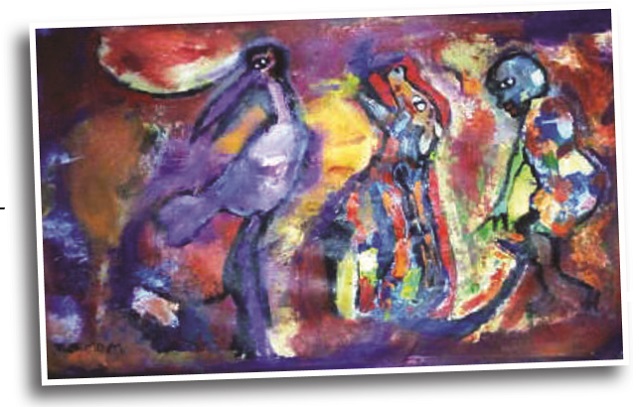
His barkcloth paper gives old material new image
Dominic Muwanguzi
How does someone in Uganda with limited formal education end up collaborating with a top British university on a groundbreaking innovation? That is the questions that Ugandan artist Mathias Tusiime’s collaboration with Newcastle University in England on the subject of recycling and reusing evokes.
Some people who know Tusiime are, however, not surprised.
Dr. Margaret Nagawa of the faculty of Fine Arts at Makerere where Tusiime is involved in several activities as a non- academic staff member says his interact with both lecturers and students has exposed him to the elements of fine art. But Tusiime’s limited access to art materials because of minimal resources has influenced him to create his own approaches and media. He has used materials that litter campus; like chewing gum, sugar-cane husks and even grass in his works. In the process, he has been able to create alternative media for other artists to work with under his Uganda Community Art and Skill Development Recycling (UCASDR) project.
But is his latest venture that is causing waves even on the international scene. Tusiime has apparently picked barkcloth, a material that has been used profusely by artists as traditional media, and given it a new contemporary lease of life; as paper.
Barkcloth is traditional fabric that is mostly synonymous with Baganda culture. The organic fibre is derived from Mutuba tree (Ficus Natalensis) whose bark is beaten create a fine dark/light-brown textile material used as traditional garb or object for cultural festivities. When it has been used in contemporary art, it has been mainly because of its symbolic cultural value. The modernist Uganda artist, Dr. Pilkington Ssengendo who passed away in 2015, used it as a motif to allude to his Ganda traditional cultural background.
But well-known artists like Jjuuko Hoods, Ronald Ronex Ahimbisibwe and Sanaa Gateja have incorporated it into for its aesthetic benefits, suggest a primal message, promote cultural conservation, and an attempt to marry the tradition and contemporary.
Aesthetically, barkcloth lures the audience into an artwork because of its texture and monochromic visual charm. But barkcloth is also a fragile fabric susceptible to decay if not handled well. It also carries baggage as a cultural tool sometimes used in rituals, and is stereotypically deemed unfit to use as a canvas.
Such attributes motivated Tusiime to create a possible alternative to this organic fabric, which turns out to be barkcloth paper.
Under his UCASDR, he regularly researches recycling and renewing both organic and synthetic objects. In the case of barkcloth, the artist found it could benefit from improving its preservation and dilution of its ritualistic attributes.
“It is now barkcloth paper,” he says of his new product, “It is different from the traditional barkcloth in terms of texture and color. I hope everyone will feel comfortable working with it.”
The paper he has created is of a thicker texture than ordinary paper which makes it almost similar to synthetic canvas. His process involves soaking the traditional barkcloth in water, beating it down further, and drying it. No synthetic chemical are added in order to preserve the paper’s barkcloth element. Working with local community of artisans, he produces large chunks of barkcloth paper that is on high demand by his contemporaries and some student artists at the College of Engineering, Design and Technology (CEDAT), Makerere University.
Tusiime’s creativity and notion of recycling add to the conversation of culture and environment that dominates many art forums and festivals globally. Tusiime’s barkcloth paper can be seen at the UCASDR offices in in Katooke, Nasaana, Wakiso District.

****
 The Independent Uganda: You get the Truth we Pay the Price
The Independent Uganda: You get the Truth we Pay the Price


